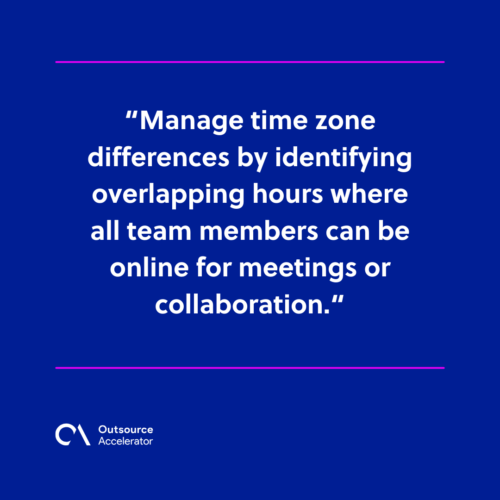3 challenges when hiring remote positions and how to overcome them

Overcoming 3 common challenges when hiring remote positions
In recent years, businesses have increasingly turned to hiring remote workers as a way to cope with the digital revolution.
Hiring remotely comes with a host of advantages, but it also presents challenges that if not managed properly, can lead to significant setbacks for your business.
Navigating these obstacles requires careful planning and strategy. This is why many growing firms work with trusted BPOs like Remote Employee to fill remote positions quickly and effectively.
As one of the leading BPOs in the Philippines, Remote Employee’s CEO, Ruffy Galang, believes that “every business deserves the chance to scale, grow, and operate to the extent of their capabilities. All we do is make getting to that point as easy as possible for them.”
In this article, we’ll explore three common challenges businesses face when hiring remote employees. We’ll also provide practical solutions to overcome these drawbacks and help your remote team thrive.
Why is hiring remote positions the new trend?
The demand for hiring remote positions is driven by the need for flexibility and evolving work expectations.
In fact, according to the Economic World Forum, by 2030, the number of global digital jobs that can be done remotely is expected to grow by about 25%, reaching around 92 million.
Here are three other compelling reasons why remote hiring is here to stay:
- Access to global talent. Hiring remotely allows businesses to tap into a broader pool of skilled workers from around the world. This allows them to find the best talent, regardless of location.
- Cost savings. Remote work eliminates the need for physical office spaces, reducing overhead costs related to rent, utilities, and equipment.
- Increased flexibility and productivity. Remote positions offer employees greater work-life balance, which can lead to higher job satisfaction, improved productivity, and reduced turnover rates.

3 common challenges when hiring remote positions
Without the right strategies in place, businesses can face difficulties that impact the success of their remote teams.
Below are three common challenges when hiring remote positions:
1. Communication barriers
Due to the heavy reliance on digital communication, remote work occasionally results in miscommunications or misinterpretations.
Without face-to-face interactions, conveying complex information or ensuring clear expectations can be more difficult, affecting team collaboration and productivity.
2. Time zone differences
Managing a remote team across multiple time zones can create scheduling conflicts, making real-time collaboration challenging.
These differences can slow down decision-making processes, delay project timelines, and require more coordination for meetings and feedback.
3. Hiring for the right skills and cultural fit
While remote hiring opens up access to a global talent pool, it can be hard to assess candidates’ true skills and determine whether they align with your company’s culture.
In the absence of in-person interactions, evaluating soft skills like adaptability and communication style can be more challenging, leading to potential mismatches.
3 ways to overcome challenges when hiring remote positions
Address remote hiring issues effectively through the following:
1. Leverage effective communication tools
To minimize communication barriers, invest in reliable tools that facilitate clear and consistent communication.
Platforms like Slack, Zoom, and project management tools like Asana or Trello help ensure that messages are clear, and tasks are organized. Regular check-ins and video meetings can also help strengthen team connections and reduce misunderstandings.
2. Use overlapping working hours and flexible scheduling
Manage time zone differences by identifying overlapping hours where all team members can be online for meetings or collaboration.
Establish flexible work hours for roles where real-time communication isn’t always needed. This will allow employees to manage their schedules and still meet deadlines without being bound to a strict 9-to-5.

3. Implement rigorous hiring and onboarding processes
Make sure you hire the right candidates by implementing a thorough interview and screening process. Include skills assessments, behavioral interview questions, and realistic job previews to understand better how candidates will perform in the role.
A comprehensive onboarding process will also help remote employees feel more connected to the company culture and their team.
Fill your remote positions with Remote Employee
Remote Employee offers a reliable and efficient way to fill your remote positions with highly skilled professionals, ensuring that your team is set up for success.
With its extensive recruitment expertise and global network, Remote Employee makes the hiring process seamless, from sourcing talent to onboarding.
Start building your ideal remote team, visit Remote Employee today and hire the best remote talent for your business!







 Independent
Independent




